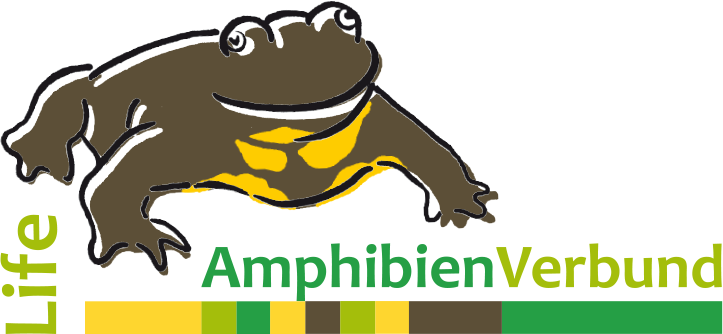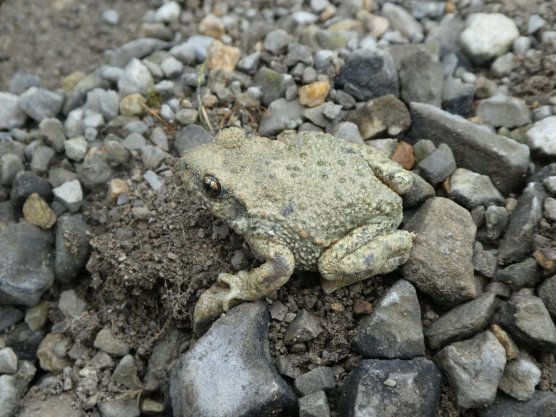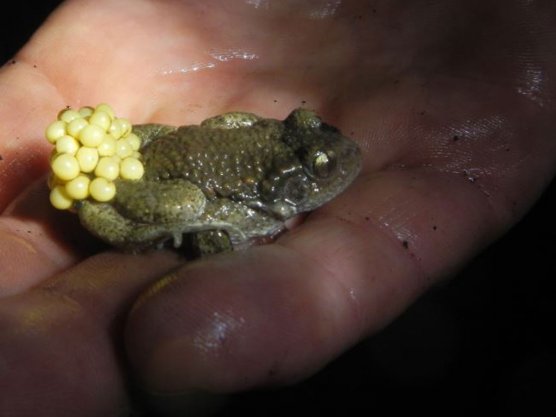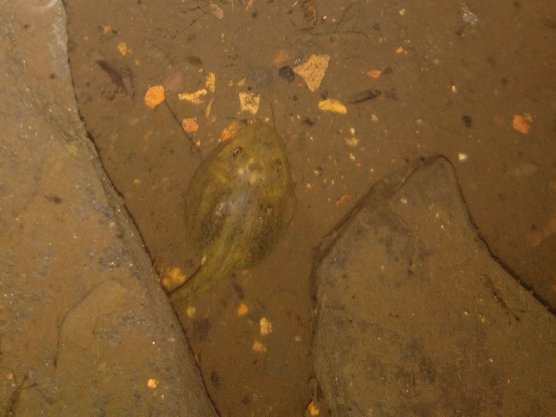
A conservation project for rare toads in the StädteRegion Aachen

The common midwife toad
Alytes obstretricans – a species listed in Annex IV of the Habitats Directive
Natural (primary) habitats of the common midwife toad in Central Europe were most likely the floodplains of smaller streams of the Central German Uplands. These probably only became suitable amphibian habitats due to beavers. As a secondary habitat, the common midwife toad now mainly colonises excavation sites, but also residential areas. In the project region, occurrences are predominantly found in quarries in the Stolberg area. Due to mining/excavation activities, the species also occurs sporadically in the northern part of the Aachen CitiesRegion. On mine dumps the animals find stony slopes exposed to the sun, gravelly fields, and open terrain with loose soil as well as stone walls, piles of stones and similar structures providing hiding places.
Until the last century, rural settlements and pastures were often colonised by common midwife toads. The odd one can be found even today living in cemeteries and gardens.
Common midwife toads live where suitable bodies of water for depositing tadpoles are available in the direct vicinity (i.e. a few hundred metres) of the terrestrial habitat. For breeding sites, the common midwife toad uses networks of many rather deeper ponds, pools and puddles as well as larger individual bodies of water that are preferably free of fish.
Only a few occurrences of the common midwife toad are currently documented in the project region, numerous others have become extinct in the meantime. The remaining occurrences are particularly essential for the conservation of a closed dispersal area in the Dutch-German border region. In NRW, the State Office for Nature, Environment and Consumer Protection goes on the basis of data from 2010 of 500 to 600 occurrences. The eastern edge of the range of the species is in Germany. The northern boundary runs through NRW, where it is oriented approximately to the threshold of the Central German Uplands.
For a long time, the common midwife toad was not considered as endangered in NRW. It was not until the 3rd edition of the Red List of NRW (1999) that it was classified as near-threatened. Already by the current 4th edition (2010), the species was listed as critically endangered (2), which is documented by the dramatic decline in populations.
Distribution maps:
Geographical distribution
Distribution in Germany
Occurrence in the north of city region Aachen




